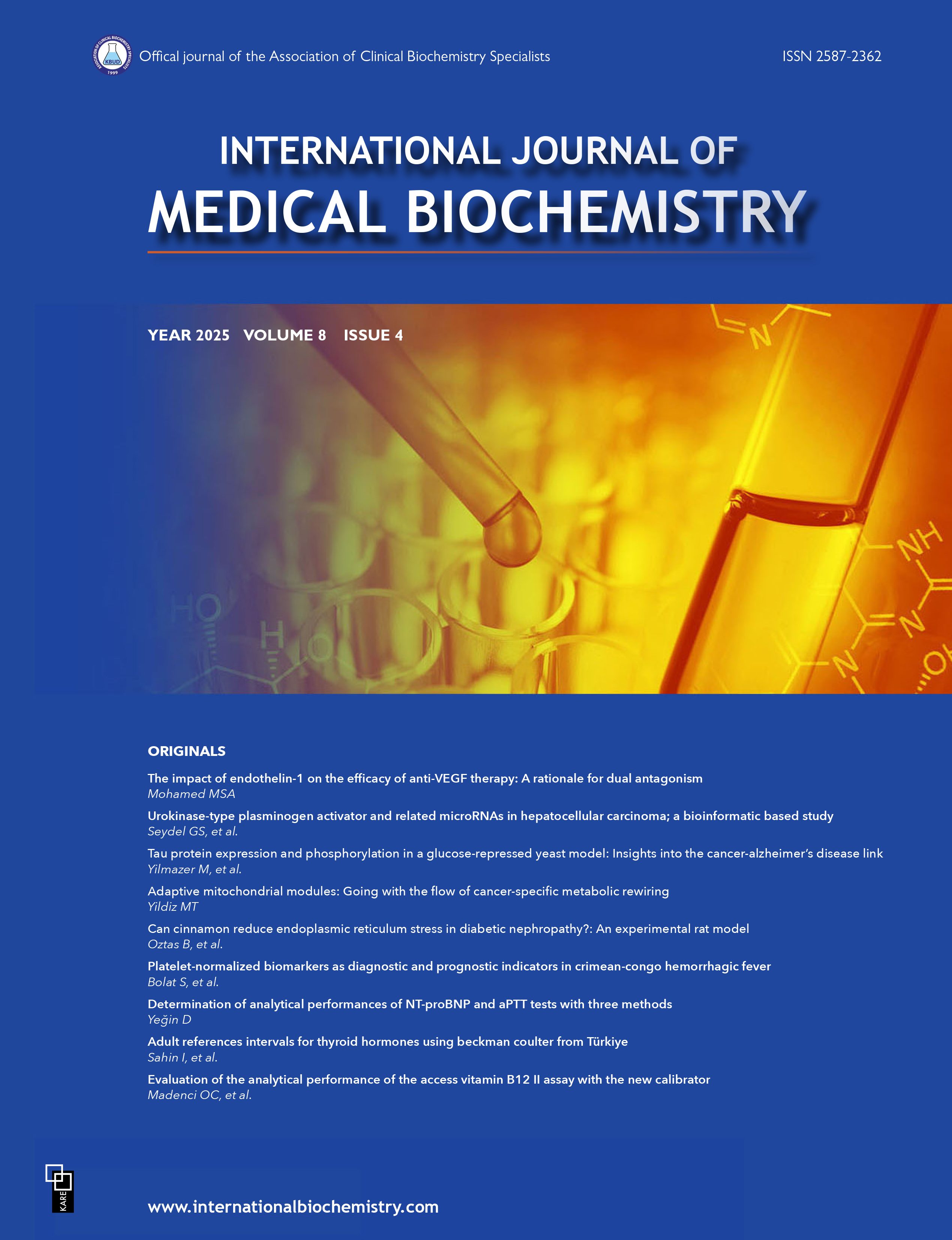Age-adjusted reference intervals for serum ceruloplasmin levels: Insights from a hospital data based study
Fatma Hande Karpuzoğlu1, Parvana Mikailova2, Meltem Kilercik3, Mustafa Serteser31Department of Medical Biochemistry, Istanbul University, Istanbul Faculty of Medicine, Istanbul, Turkiye2Acibadem Labmed Clinical Laboratories Clinical Biochemistry, Istanbul Turkiye
3Department of Medical Biochemistry, Acibadem University, Istanbul Turkiye
INTRODUCTION: Ceruloplasmin (Cp), a plasma protein that acts as a copper transporter, plays a crucial role in the screening process for Wilsons disease. Measuring the serum Cp level serves as the initial step in this screening procedure. However, serum Cp reference limits can vary over age, sex, and using of different measurement methods. In reference interval (RIs) studies, the utilization of hospital data is considered an accepted approach, especially in situations where achieving strict standardization is challenging, such as in pediatric age group. Our study aimed to determine the RIs for Cp levels from 1 to 80 years of age using laboratory data, providing valuable guidance for clinicians and researchers in interpreting Cp test results across different age groups.
METHODS: Forty-seven thousand five hundred and fifty-six (47,544) Cp data points were collected between July 2010 and 2020 from Acıbadem Labmed Laboratories. To determine the RIs, both common RIs and sex-specific RIs were calculated using the Bhattacharya indirect method.
RESULTS: The RIs for serum Cp levels in children are as follows: 15 years: 2348.2 mg/L, 510 years: 2338.2 mg/L, and 1015 years: 20.536.3 mg/L, respectively. For women, the RIs for serum Cp levels are as follows: 1520 years: 1933.5 mg/dL, 2040 years: 19.636.8 mg/dL, 4060 years: 20.442 mg/dL, and 6080 years: 23.545 mg/dL, respectively. For male, the RIs for serum Cp levels are as follows: 1520 years: 17.031.3 mg/dL, 2040 years: 17.834.5 mg/dL, 4060 years: 18.638.0, and 6080 years: 23.040.5 mg/dL, respectively.
DISCUSSION AND CONCLUSION: This study has demonstrated a significant and independent association between age and gender concerning Cp concentrations. Although our methodology provided only approximate RIs for Cp, our results emphasize the significance of age adjustment when determining RIs. Taking age and gender into account is crucial for accurately establishing appropriate reference ranges for Cp in clinical settings.
Keywords: Bhattacharya analysis, ceruloplasmin, reference interval
Manuscript Language: English







